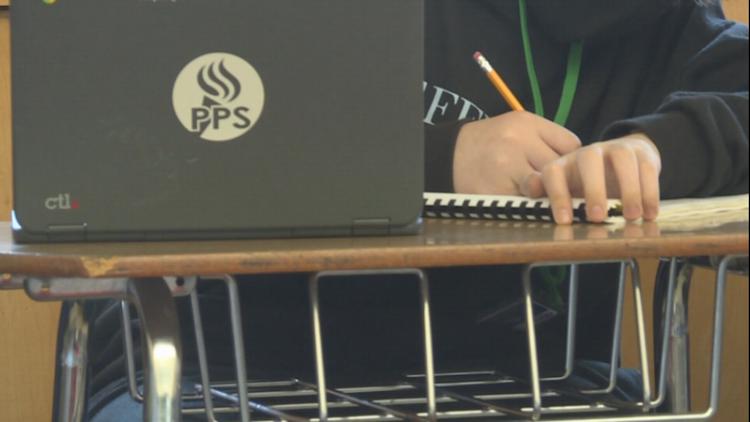SALEM, Ore. — Gov. Tina Kotek unveiled a proposal on Wednesday to increase the state's funding for K-12 public schools after a year marked by widespread budget cuts and layoffs at some of Oregon's largest school districts.
The proposal involves upping the "current service level (CSL) for the State School Fund," the main source of state funding for K-12 public schools, by around $515 million from the original estimation for the 2025-2027 period. Kotek hopes to achieve that through three significant tweaks to the way the fund is calculated.
The current service level is the amount of money needed in the next two year-period, or biennium, to continue programs. The total estimate will be updated before the state's 2025 legislative session, the governor's office said.
In the last decade, according to the governor's office, the state gave districts 50% of the allotted funds in the first year, then the other half in the next year. Kotek's proposal changes that to a 49%/51% split, which will increase the calculation of the State School Fund's current service level for the next two years; the change will also account for rising costs that occur in the second year.
In addition, Kotek's office said, the state will change how it estimates change in compensation costs for teachers, administrators and classified staff. Right now, the state looks back at 20 years of historical data to make its projections.
"This model has proven to be very accurate (more than 98%) in calculating actual compensation costs, based on the information school districts submit to ODE," Kotek's office said. "That also means the State has historically been within 2 percentage points of being completely accurate."
But Kotek is asking state agencies to shorten the gap between projected and actual compensation costs to 10 years instead of 20, which is expected to increase the CSL.
"The 10-year period gives us more accurate and more recent data than 20 years," Kotek's office said. "This one-time increase will reflect an even more precise compensation projection and leads to the largest funding increase in the proposal. It’s also important to note that this change will roll forward into future two-year budget cycles."
Kotek's office also directed state agencies to account for annual information for projected local revenue, with the goal of increasing accuracy and precision, instead of the previous method of not including fluctuations in local property tax revenue in the second year of the biennium.
“Across the country, school districts are facing budget shortages caused by the expiration of federal pandemic relief dollars, declining enrollment, increasing costs due to inflation, and many other factors,” Kotek said in a press release. “In response to the way these issues are impacting Oregon students, educators and administrators, I committed to reviewing and updating the methods of how the State funds public schools.
“We are working to be a stronger, more accurate and predictable funder of K-12 public education across Oregon. This effort is part of my priority to ensure we are moving the needle on improving education outcomes for our students, from improving early literacy rates to preventing learning loss to increasing graduation rates. And, ultimately it’s about more than just resources — it’s about the specific outcomes."



